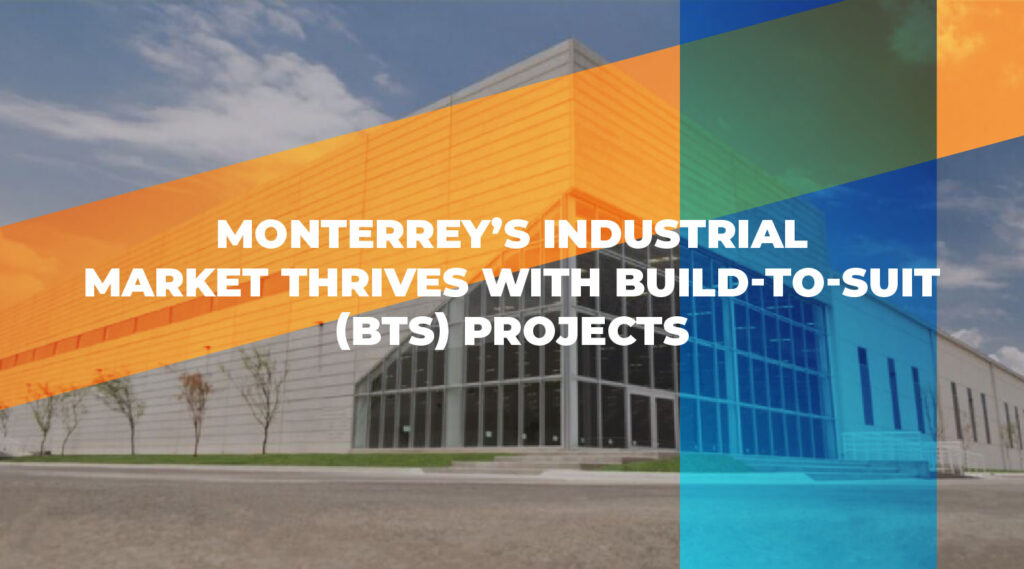

March 9, 2023 | #DatozByDatoz
An article by Datoz,
With the contribution of Alexis Magallanes, Market Analyst
In recent years, Monterrey’s industrial real estate market has established itself as one of the largest and most dynamic in the country, as more and more companies consider the northern region of Mexico to establish their manufacturing or logistics operations, and many choose Monterrey as their headquarters.
This dynamism has driven developers to approach market opportunities in different ways. When considering the construction of industrial buildings there are two basic origins : speculative and built-to-suit (BTS) projects. Speculative buildings are undertaken as a calculated investment risk in order to attract companies looking for industrial space, while BTS projects are built according to the specific needs of a tenant and are generally considered lower risk.
According to information from Datoz’s Analytics 2.0 platform, a total of 6.1 million square feet (ft2) of BTS buildings for lease/sale were constructed in Monterrey during 2022. Although developers continue to construct speculative buildings, we can observe a growing trend towards the development of BTS projects. During 2019, 36% of new construction was attributed to BTS’s, in 2022 they represented over 46% of industrial construction activity. Moreover, BTS construction in Monterrey had the highest share of construction activity during a single year since Datoz began operations in 2014.
The rise in BTS development can be attributed to companies’ preference for investing in buildings that are customized to their specific requirements even when occupation occurs through a lease. This has led to more developers seeking to secure land for these types of projects, despite the increased costs, due to higher returns on investment and lower risk they offer.
BTS projects, however, also carry complexities of their own as they may take longer to reoccupy, once vacated, given their specialized nature. If not thought-out correctly and negotiated properly between a developer and its tenant, it may be challenging for another user to adapt to its configuration and design.
The demand for BTS projects benefits developers with greater extent of land reserves, as they have superior negotiating leverage and may have an upper hand given the current situation of scarcity of land and energy, as well as rising land values.
It should be noted that most BTS projects are large buildings specifically designed for manufacturing operations. These types of large-scale production facilities usually generate greater wealth distribution and have a higher positive economic impact on a region.
Hofusan Industrial Park houses recent prominent BTS projects currently under construction or that have recently been delivered. Moreover, tenants occupying these facilities are all Chinese companies. One example is the Sunon plant, which is currently under development and will measure up to 1.4 million ft2, another are the Daye plants, which are planned in two phases, the first building will be 538,195 ft2 and the second will exceed 1.1 million ft2, according to the transactional data taken from Datoz’s Analytics 2.0 platform.
Additionally, Prologis is constructing a BTS facility that will exceed 650,000 ft2 in Prologis Park Apodaca for The Toro Company, an American company that designs, manufactures, and markets lawn mowers, snowplows and irrigation system supplies. Chinese oil company, Hengli, is currently developing its brand new 720,000 ft2 facility in Finsa Santa Catarina Industrial Park.
In conclusion, the rise in build-to-suit projects in Monterrey’s industrial real estate market is a clear reflection of the growing demand for tailored spaces that meet the specific requirements of modern businesses. As this trend continues to gain momentum, it presents exciting opportunities for developers, tenants, and investors alike. With the right strategies and partnerships in place, those who capitalize on this trend are poised for success in the years to come.